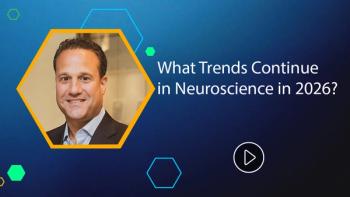
The Future of the Pharmacovigilance and Regulation Management Depends on Automation
Digital transformation has long been a buzzword across life sciences, but market roles are changing across the industry, and we are starting to see more digital transformation officers in regulatory and safety divisions-historically something that was mostly in commercial and clinical sides of the business. Now, the industry is looking at tech solutions within safety and regulatory compliance to solve critical business challenges, such as how to best leverage NLP or ML and AI to move and intake all forms of data and documents into their systems, and how to start to automate certain parts of the analysis where applicable.
Three years ago, there was little interest in automation but, today, pharma companies want to know how to use blended versions of data to do causality assessments for significant parts of product portfolios. For example, they are recognizing that regulatory information management systems will provide a single source of truth about their product portfolio and that, in safety/pharmacovigilance, purpose-built SaaS-based platforms can help them manage oversight and reporting of adverse events over thousands of platforms and across more medications than imaginable.
In 2020 and beyond, both on the organizational as well as the technology side, businesses will look at how to reimagine the end-to-end solutions in pharmacovigilance and regulatory compliance. Businesses must evolve to deal with the growing proliferation and availability of data, as well as management of information intake and reporting, to meet PV and regulatory requirements so they can focus more resources on research, development, and innovation.
Automation will be critical to the success of the pharma industry
Within PV and regulatory compliance, pharma companies are constantly dealing with a growing influx of changes-more data from more sources, more products in more locations, and constantly changing reporting requirements. Each change has a cascading impact on other parts of the organization. Businesses need RIM and PV orchestration tools supported by knowledgeable tech partners who understand the industry and can help companies take in and make sense of massive amounts of data while also navigating a complex and ever-evolving regulatory environment.
Technology solutions will become mission-critical
Manpower alone cannot manage the increasing data volumes and complexities. Technology will support PV and regulatory compliance processes in ways that weren’t comprehensible a decade ago, which will be vital to the success of all pharma companies. There are not enough people with sufficient skills and bandwidth to manage all the data that needs to be processed, sorted, and shared. Technology will support the evolution of the structure of the pharma industry workforce and changing roles within the industry.
Pharma once feared automation but, now, companies are looking to technology for solutions. These solutions will not eliminate jobs; rather, they will enable them. Fifty-eight million net new jobs are expected to be created by 2022 (
Pharmacovigilance tools will be re-examined
Expect that more than 80% of the top 100 pharma companies will initiate a re-examination of their safety platforms and supporting technologies in the next few years. This is due to increased volume of adverse events and pressure from businesses to lower their costs through automation. The vast majority of the top 100-200 pharma companies will engage in automation projects in 2020. The industry is recognizing their aged, inflexible technology can’t meet the growing needs of the business.
More patient-centric data will be available from more disparate sources
Data-where it will come from (data sources) and how it will arrive (data delivery)-will continue to evolve. Data available from wearables and patient-centric direct reporting is now available. From a med-tech devices perspective, this could be a whole new ball game for PV and regulatory compliance. This will lead to improved engagement of patients and healthcare professionals and will help transform healthcare for the digital era.
Even more data will be available via social media and as support networks grow and allow patients to engage with one another and with medical professionals to share information about treatments as well as their own disease progression. This data will also need to be captured for adverse event monitoring to detect any patterns early and easily. Essentially, the industry will need to adapt to handle more data from disparate sources.
Data will need to be easily, visually accessible
Pharma companies will derive insights from data via visualization tools for signal detection and for monitoring risks and benefits in real-time, especially for small to mid-sized pharma businesses. This will have an impact on labeling as well. Large pharma companies need to ensure they are selecting the right tech vendor to do their work for them. It is also essential to make sure the vendor uses the right tools. Small to mid-sized pharma companies will still be more hands-on but will want to see what data and visualization tools are directly accessible to them. They will need to choose vendors who use technology that is appropriate and that aligns with the best use of their budgets.
Regulatory and safety teams will start to merge
Regulatory and safety teams are already beginning to integrate and to speak the same language. They are utilizing the same technology. We’ll see this more and more, in terms of how the information is being used and shared across entities and within pharma organizations. This greater collaboration will yield further optimization of tools and resources, propelling the industry forward by enabling continued innovation.
Joe Rymsza, vice president, Pharmacovigilance and Regulatory Technology Solutions at IQVIA
Newsletter
Lead with insight with the Pharmaceutical Executive newsletter, featuring strategic analysis, leadership trends, and market intelligence for biopharma decision-makers.





